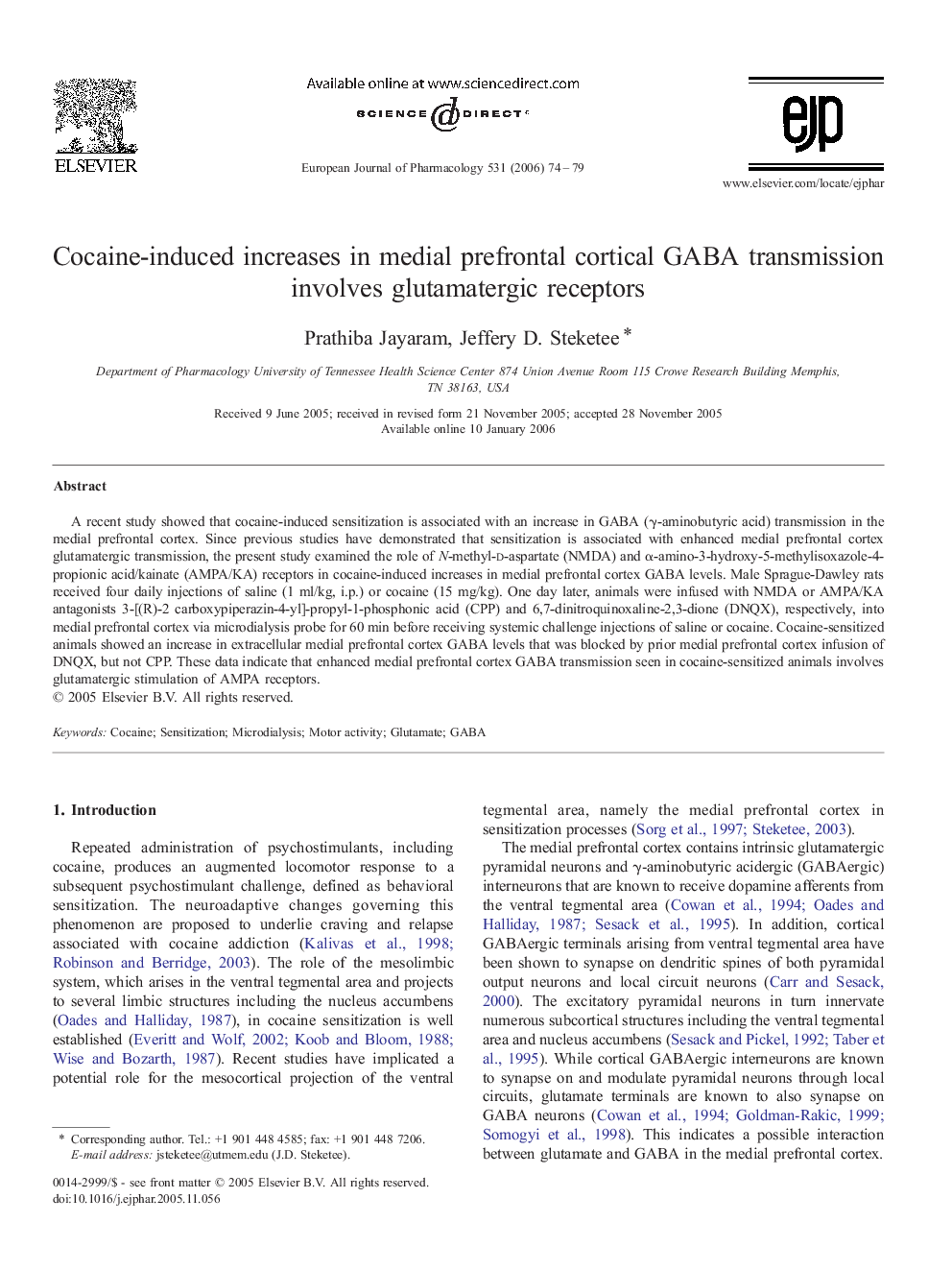| کد مقاله | کد نشریه | سال انتشار | مقاله انگلیسی | نسخه تمام متن |
|---|---|---|---|---|
| 2537407 | 1559190 | 2006 | 6 صفحه PDF | دانلود رایگان |

A recent study showed that cocaine-induced sensitization is associated with an increase in GABA (γ-aminobutyric acid) transmission in the medial prefrontal cortex. Since previous studies have demonstrated that sensitization is associated with enhanced medial prefrontal cortex glutamatergic transmission, the present study examined the role of N-methyl-d-aspartate (NMDA) and α-amino-3-hydroxy-5-methylisoxazole-4-propionic acid/kainate (AMPA/KA) receptors in cocaine-induced increases in medial prefrontal cortex GABA levels. Male Sprague-Dawley rats received four daily injections of saline (1 ml/kg, i.p.) or cocaine (15 mg/kg). One day later, animals were infused with NMDA or AMPA/KA antagonists 3-[(R)-2 carboxypiperazin-4-yl]-propyl-1-phosphonic acid (CPP) and 6,7-dinitroquinoxaline-2,3-dione (DNQX), respectively, into medial prefrontal cortex via microdialysis probe for 60 min before receiving systemic challenge injections of saline or cocaine. Cocaine-sensitized animals showed an increase in extracellular medial prefrontal cortex GABA levels that was blocked by prior medial prefrontal cortex infusion of DNQX, but not CPP. These data indicate that enhanced medial prefrontal cortex GABA transmission seen in cocaine-sensitized animals involves glutamatergic stimulation of AMPA receptors.
Journal: European Journal of Pharmacology - Volume 531, Issues 1–3, 15 February 2006, Pages 74–79